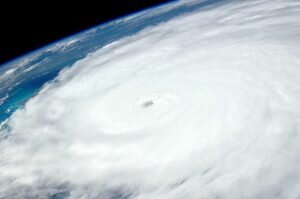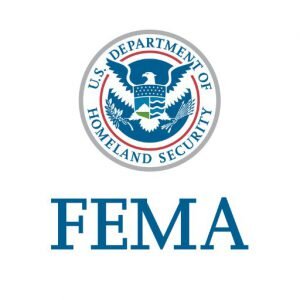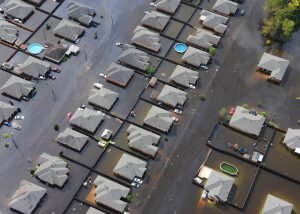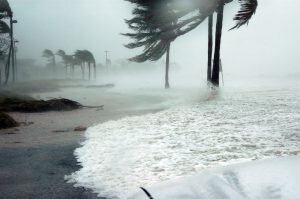Thinking About Disaster Planning? You Should Be!
 Most people think about disasters as something that happens to others, not to them. But after witnessing back-to-back weather catastrophes in Houston, Florida, the Caribbean, and more recently in Puerto Rico, many condominium associations are recognizing that the unthinkable could, in fact, happen to their communities, and considering what they should do to prepare for that possibility.Disaster planning and disaster recovery are huge topics about which others have written entire books. Since I don’t propose to do that, I’m going to target two issues that should rank among the primary concerns for condo associations (insurance coverage and ongoing operations), before offering some general advice about disaster planning. Spoiler alert: I’m going to suggest that it’s a good idea.
Most people think about disasters as something that happens to others, not to them. But after witnessing back-to-back weather catastrophes in Houston, Florida, the Caribbean, and more recently in Puerto Rico, many condominium associations are recognizing that the unthinkable could, in fact, happen to their communities, and considering what they should do to prepare for that possibility.Disaster planning and disaster recovery are huge topics about which others have written entire books. Since I don’t propose to do that, I’m going to target two issues that should rank among the primary concerns for condo associations (insurance coverage and ongoing operations), before offering some general advice about disaster planning. Spoiler alert: I’m going to suggest that it’s a good idea.
Flood Insurance
My insurance agent tells me that in the days following Hurricane Harvey, which drowned large parts of Houston, he was deluged with questions about flood insurance. The questions are understandable, because the issue is a bit complicated.Homeowners who have a mortgage on property located in a designated flood risk area are required to have flood insurance. Condo associations located in flood zones also must have flood insurance coverage for their buildings. Without that protection, the secondary market giants (Fannie Mae and Freddie Mac) won’t purchase mortgages on units in those communities. But condo associations not located in flood risk areas aren’t required to have flood insurance unless their governing documents mandate it. Likewise, homeowners who aren’t in flood risk areas or who don’t have a mortgage on their property aren’t required to have the insurance. Whether they should have it is another question entirely, but most of them don’t. According to some estimates, only 15 percent of all home owners and businesses, including home owner associations, have the coverage.The problem with not having a flood policy: Standard policies specifically exclude flood damage. As a result, CoreLogic has estimated that between 70 percent and 80 percent of the damage from Hurricane Harvey in Houston – somewhere between $18 and $27 billion – wasn’t covered by insurance of any kind. Insured losses covered by the National Flood Insurance Program (NFIP) ―the primary source of flood insurance ─ are estimated at between $6.5 billion and $9.5 billion.
But condo associations not located in flood risk areas aren’t required to have flood insurance unless their governing documents mandate it. Likewise, homeowners who aren’t in flood risk areas or who don’t have a mortgage on their property aren’t required to have the insurance. Whether they should have it is another question entirely, but most of them don’t. According to some estimates, only 15 percent of all home owners and businesses, including home owner associations, have the coverage.The problem with not having a flood policy: Standard policies specifically exclude flood damage. As a result, CoreLogic has estimated that between 70 percent and 80 percent of the damage from Hurricane Harvey in Houston – somewhere between $18 and $27 billion – wasn’t covered by insurance of any kind. Insured losses covered by the National Flood Insurance Program (NFIP) ―the primary source of flood insurance ─ are estimated at between $6.5 billion and $9.5 billion.
Uncovered Risks
I talked to Marc Markel, a founding partner in Houston-based Roberts Markel Weinberg Butler Hailey, whose firm represents more than1,700 condo associations in Texas, 1,000 of them in the Houston area, most of which were affected ― some disastrously ─ by the category 5 hurricane that struck and lingered over Houston for several days. Many of those communities, Marc tells me, have no insurance in place to cover the damage they suffered. The Federal Emergency Management Association (FEMA) provides some assistance to help homeowner’s and businesses with recovery and reconstruction costs. But the assistance is limited — the maximum is about $33,000 per household; it comes in the form of a loan, which has to be repaid; and condo associations aren’t eligible for the assistance to repair common areas. Only individual homeowners can qualify for funds to repair their individual units. All of these limitations underscore the need for flood coverage, even if it isn’t required, and even if the property isn’t in a designated flood hazard area. FEMA estimates that 25 percent of NFIP claims come from people who don’t live in flood plains.Some associations have heeded the advice of their insurance agents or their attorneys and purchased flood coverage. But flood insurance premiums have been rising, and some associations that had coverage have decided to drop it as a result. This can be a costly decision. My advice when association clients ask: Consider how much uninsured flood damage your community can sustain. The comparison you should make: $50,000 (or more) for a flood policy vs. $500,000 (or more) for an uncovered damage claim. Many Houston associations that decided they could forego flood coverage have ended up underwater both financially and literally, as a result.Boards that are considering whether to obtain flood insurance, or drop an existing policy, should discuss the issue with owners first (and let them vote if the documents require that). If the board foregoes coverage because owners oppose it, they will deflect liability, at least to some extent, if it turns out that the association needed the coverage after all.Boards should seek input from owners on earthquake coverage as well for the same reasons. This is another hazard that condo associations and homeowners generally tend to underestimate or ignore completely, even though Massachusetts sits on the second worst fault line ― behind California’s San Andreas Fault ─ in the country.
The Federal Emergency Management Association (FEMA) provides some assistance to help homeowner’s and businesses with recovery and reconstruction costs. But the assistance is limited — the maximum is about $33,000 per household; it comes in the form of a loan, which has to be repaid; and condo associations aren’t eligible for the assistance to repair common areas. Only individual homeowners can qualify for funds to repair their individual units. All of these limitations underscore the need for flood coverage, even if it isn’t required, and even if the property isn’t in a designated flood hazard area. FEMA estimates that 25 percent of NFIP claims come from people who don’t live in flood plains.Some associations have heeded the advice of their insurance agents or their attorneys and purchased flood coverage. But flood insurance premiums have been rising, and some associations that had coverage have decided to drop it as a result. This can be a costly decision. My advice when association clients ask: Consider how much uninsured flood damage your community can sustain. The comparison you should make: $50,000 (or more) for a flood policy vs. $500,000 (or more) for an uncovered damage claim. Many Houston associations that decided they could forego flood coverage have ended up underwater both financially and literally, as a result.Boards that are considering whether to obtain flood insurance, or drop an existing policy, should discuss the issue with owners first (and let them vote if the documents require that). If the board foregoes coverage because owners oppose it, they will deflect liability, at least to some extent, if it turns out that the association needed the coverage after all.Boards should seek input from owners on earthquake coverage as well for the same reasons. This is another hazard that condo associations and homeowners generally tend to underestimate or ignore completely, even though Massachusetts sits on the second worst fault line ― behind California’s San Andreas Fault ─ in the country.
Ongoing Operations
Earthquakes, floods and other disasters don’t just damage buildings; they also damage the people who live in them. And condo associations have to deal with the financial impacts on both. The first concern in any disaster is for the physical safety of residents, but condo associations also have to be concerned about the ability of owners to pay their bills in the face of what may be overwhelming financial losses. Mortgage lenders estimate that more than 25 percent of the Houston homeowners affected by Harvey may miss at least one mortgage payment; condo associations should expect that some owners will be unable to pay their association fees as well. How should they respond?The humanitarian instinct to help owners in need is understandable. But boards also have to consider the financial impact on the association. If owners don’t pay their fees, the association won’t be able to pay its bills, and ensuring the financial viability of the organization is the board’s primary obligation. In the wake of Hurricane Harvey in Houston, Marc Markel is advising his association clients to approach collection issues on a case by case basis. “All communities have different issues,” he notes. Some suffered devastating damage, others weren’t touched; some were in good financial shape to begin with, others were already struggling; some had flood insurance, others had none. Some associations will have more financial flexibility than others; some won’t have any flexibility at all. “You have to balance compassion for owners with the viability of the association,” Marc says. “You have to triage it.”For owners who were delinquent before the storm, but not yet subject to foreclosure action, the consensus view of his association clients has been: “Unless the community or the individual was totally devastated, they would resume collection efforts in October,” providing about one month of relief.For owners who were already subject to foreclosure actions, however, the calculation may be somewhat different. “We know that if we went to court tomorrow seeking a foreclosure order, the judge would ask if this was in an affected area.” If the answer was yes, Marc notes correctly, some judges might be less inclined to accept the ordinarily persuasive argument that it is unfair to shift the burden of those unpaid fees to other owners. My view: Associations will just have to press that argument, pointing out that if 25 percent of owners don’t pay their share, fees for the other 75 percent will increase, and some of them won’t be able to afford the higher payments.
In the wake of Hurricane Harvey in Houston, Marc Markel is advising his association clients to approach collection issues on a case by case basis. “All communities have different issues,” he notes. Some suffered devastating damage, others weren’t touched; some were in good financial shape to begin with, others were already struggling; some had flood insurance, others had none. Some associations will have more financial flexibility than others; some won’t have any flexibility at all. “You have to balance compassion for owners with the viability of the association,” Marc says. “You have to triage it.”For owners who were delinquent before the storm, but not yet subject to foreclosure action, the consensus view of his association clients has been: “Unless the community or the individual was totally devastated, they would resume collection efforts in October,” providing about one month of relief.For owners who were already subject to foreclosure actions, however, the calculation may be somewhat different. “We know that if we went to court tomorrow seeking a foreclosure order, the judge would ask if this was in an affected area.” If the answer was yes, Marc notes correctly, some judges might be less inclined to accept the ordinarily persuasive argument that it is unfair to shift the burden of those unpaid fees to other owners. My view: Associations will just have to press that argument, pointing out that if 25 percent of owners don’t pay their share, fees for the other 75 percent will increase, and some of them won’t be able to afford the higher payments.
 Planning for Disasters
Planning for Disasters
Disasters highlight the importance of planning for them. It shouldn’t require an actual disaster to make that point, but as Marc told me, “It is human nature not to plan in advance. There were a lot of things we have advised associations to do that were on their to-do lists, but hadn’t yet been done.”One of the most disheartening headlines I saw about Hurricane Harvey was this one in the Washington Post, referencing decades-old studies calling for flood mitigation measures in cities like Houston: “We already knew how to reduce the damage from floods. We just didn’t do it.”That is not a message any condo board or manager wants to deliver to owners. You can’t prevent disasters, but there are many things you can and should do to limit the damage and ease the recovery process, starting with: Creating a disaster response and recovery plan. This advice is obvious, essential, oft-repeated, and generally ignored. Speaking from his recent and ongoing experience in Houston, Marc says, the biggest mistake associations make in managing a disaster is “failing to plan for it.” The following suggestions are based partly on Marc’s advice and partly on the advice we give our clients:
- Analyze your community. Identify the most vulnerable areas where damage risks are greatest, and detail the measures required to protect them in advance of a known threat. For example:
- Note the highest and lowest points in your community; identify the areas or streets most prone to flooding. If the community has creeks, levies, bayous, ponds or other water areas (common features in Houston condo communities), determine whether the water levels can be lowered in advance of a coming storm and calculate how much in advance that process must begin. “Pumps can only work so fast,” Marc points out.
- Consider personnel needs during an emergency. If you have an elevator building and a power outage is possible, consider whether you should you have an engineer ride out the storm in the building. Marc’s advice to many of his clients: “You bet!”
- Create a list of residents including their emergency contacts and update the information at least annually. Identify residents with special needs who would require special assistance if the buildings are evacuated.
- Maintain an emergency contact list for the community.
- Maintain a current vendor list
- Review the association’s insurance coverage at least annually. Report the addition of amenities or other changes that could affect the replacement cost on which the coverage limits are based. Document (with pictures) all components that could be subject to damage claims.
- Review and update your disaster plan annually and, Marc emphasizes, “Make sure you have a funding mechanism in place to make it viable. Having a plan you can’t implement is worse than not having any plan at all.”
- Ask service providers on whom you rely (management companies and law firms, for example) to detail their disaster plans outlining the steps they will take to maintain operations during the disaster and/or resume operations as quickly as possible afterward.
- Protect vital association records. Store back-up records (paper records and computer data) off-site, and make sure your management company has a reasonable plan for protecting its records, as well.
- Respond proactively to a known threat. Weather forecasts aren’t 100 percent accurate, Marc cautions, “so don’t rely on predictions that a storm is going to pass you by. If it’s close, if there is even a 1 percent chance that it could hit, get everything in the community as ready as you can.” It’s better to have owners annoyed because you closed the pool when it could have remained open, he notes, than to have it suffer damages you could have prevented or reduced.
When the focus shifts from weathering a disaster to recovering from it:Get everything within the association’s control up and running as quickly as possible.
- Document the damage the association has suffered and, Marc emphasizes, make sure you have the right equipment to do that, including a good quality camera and video equipment. “Some Houston communities are identifying the losses on a million-dollar building on an I-phone,” he says. “That is ridiculous.”
- Mitigate any property damage to avoid compounding it. For example, dry out water-damaged areas to reduce mold risks.
- Expect to be sued for what the association does, doesn’t do, or both. “If there is the potential for disagreement, someone will almost certainly file a claim related to it,” Marc says. He predicted that “within a week or less” after Hugo struck in Houston, “association boards would begin getting demand letters from owners looking to the home owners association to take care of a lot of things, including things that aren’t strictly speaking the association’s responsibility.” Boards can’t prevent litigation, but they may be able to reduce the risks, at least somewhat, by educating owners so they understand where the association’s obligations begin and end.
- “Learn from the experience.” This is Marc’s advice to the Houston-area associations that are still recovering from Hugo. It applies equally to associations in New England and elsewhere that are contemplating how they will manage disasters in the future. “Every time you experience a disaster, no matter what or where it is,” Marc suggests, “you learn something about what you did, what you didn’t do, what you should have done, and what you need to do better in the future.”
Help for Hurricane Victims
Although this alert focuses on how associations can and should plan for future disasters, residents of Houston, Florida, the Caribbean and Puerto Rico are still coping with the devastating effects of the disasters they have experienced in the past few weeks. For those looking for ways to help, we’ve compiled the following list of local and national organizations that are providing assistance to the affected areas.
FLORIDA
General Relief:
Volunteer Florida: Seeking volunteers and donations.
Neighborhood Health Clinic: Medical needs of storm victims.
Heart of Florida United Way and United Way of Miami-Dade: Food, shelter, and health services.
Brigid’s Crossing Foundation: Animal shelter in Naples, Florida.
Food:
All Faiths Food Bank and Second Harvest Food Bank of Central Florida: Collecting food and monetary donations.
Shelter:
Gulf Coast Community Foundation: Funding to support immediate relief and long-term recovery efforts to rebuild the region.
Habitat for Humanity of Key West and the Lower Florida Keys: Working to rebuild destroyed homes.Community Support:
Boys & Girls Clubs of Miami-Dade: Seeking financial contributions and donations of: water, bug spray, baby products, hygiene products, non-perishable food that's easy to open, and pre-sorted clothing for children and teenagers.
Place of Hope, Palm Beach Gardens: Provides family-style foster care for abused children. Seeking funding to repair some of its hurricane-damaged facilities.
TEXAS
General Relief:
Greater Houston Community Fund: Providing a broad range of relief efforts related to food, housing, and health.
United Way of Greater Houston: Maintaining a 24-7 helpline, providing information to victims about how to access food, shelter, and supplies. The nonprofit is also working with social service providers to address community needs.
Houston Humane Society, Society for the Prevention of Cruelty to Animals of Texas, San Antonio Humane Society, and Austin Pets Alive, are all providing care and shelter to affected animals.
Food:
The following food banks are collecting items, as well as monetary donations, for Harvey victims: Houston Food Bank, Galveston Food Bank, Coastal Bend Food Bank in Corpus Christi, San Antonio Food Bank, Feeding Texas.
Shelter:
Coalition for the Homeless of Houston/Harris County: Supporting a transition housing program to help displaced families.
Houston Chapter of Habitat for Humanity: Working to rebuild destroyed homes.
Community Support:
L.G.B.T.Q. Disaster Relief Fund: Providing counseling, case management, shelf-stable food, furniture, housing, and more to individuals and families.
Portlight Strategies: Helping disabled storm victims find medical equipment, housing, and addressing other needs they might have.
Greater Houston Community Foundation: Relief funds for housing, food, supplies, healthcare, transportation, and child care.
PUERTO RICO
GoFundMe: Lists verified campaigns collecting donations for victims of the storms.
ConnectRelief, Hurricane Maria Recovery Fund, Taller Salud, Unidos Por Puerto Rico, and the Puerto Rican Hurricane Relief Fund: All are raising money to rebuild homes and infrastructure and to provide food, medical supplies, clothing, and social services to hurricane victims:
CARIBBEAN
Dominica Hurricane Relief Fund: To provide temporary roofing, blankets, and non-perishable foods.
BVI Recovery Fund: Helping to provide food, clothing, and housing for those affected by Irma.
Disaster Recovery Marshall Plan for the British Virgin Islands
Friends of Caritas Cuba: Relief efforts for children, the elderly, and those living with HIV/AIDS.
Anguilla Beaches: Funding emergency supplies.
National and Global Organizations
Oxfam: Focusing on the Caribbean islands.
GlobalGiving: Focusing on local relief and recovery efforts in areas affected by Harvey.
The Center for Disaster Philanthropy: Providing temporary shelter, food, and water to hurricane victims; also assisting with long-term recovery efforts.
Samaritan's Purse: Partnering with local nonprofits and churches in Texas and Florida.
All Hands Volunteers: Sending an immediate response team to the US Virgin Islands.
Convoy of Hope: Sending meals to Haiti.
Americares: Distributing emergency medical supplies and other basic resources to first responders and victims of Hurricanes Harvey and Irma.
South Florida Wildlife Center and Brigid’s Crossing Foundation: Rescuing and rehabilitating animals imperiled by Irma.
